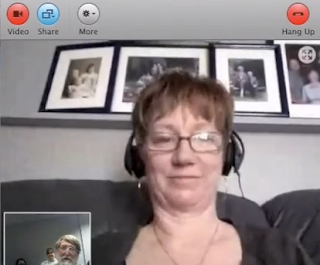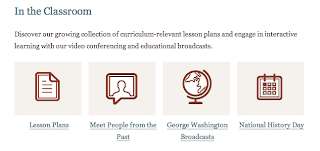Shane Koyczan: To This Day...for the bullied and beautiful by Erin Crane
 I honestly cannot describe Shane Koyczan’s poetry video about being bullied. The way he used his poetry to perfectly convey what kids go through in schools was breathtaking. Shane started off talking about the way his decisions would get shot down as a kid. Decisions like “What do you want to be when you grow up?” “What do you want to make of yourself?”. He would answer honestly and be told he either could not do it or needed to aim higher. They didn’t want to know what he wanted to be, they wanted to tell him what not to be!
I honestly cannot describe Shane Koyczan’s poetry video about being bullied. The way he used his poetry to perfectly convey what kids go through in schools was breathtaking. Shane started off talking about the way his decisions would get shot down as a kid. Decisions like “What do you want to be when you grow up?” “What do you want to make of yourself?”. He would answer honestly and be told he either could not do it or needed to aim higher. They didn’t want to know what he wanted to be, they wanted to tell him what not to be!
He moved on to talk about the titles and nicknames he was labeled by his peers. Some purposely hurtful, some not. Children don’t always see that the words they use hurt other people (adults have this problem too). He talked about how the name “porkchop” leaves him no longer able to eat the food, and another little girl called dog for her early childhood still doesn’t see herself as beautiful. Words are scarring.
He started bringing in the way he kept self-motivated after these things. A boy adamant on calling him “Yogi Bear” demanded he do his homework. Shane did it, but with all incorrect answers. The boy was confused as to why he received a 0 on the paper that Shane got a 28/30 on. Shane responded with “smarter than the average bear…”! He used his brains to outsmart them. A great example to fight violence with nonviolence.
Listening to him go through his bullying trials in school, turning it into poetry, I was shown a boy who made his bad circumstances into greatness. He chose to take those experiences and use them to better himself. This gave me insight into how “just words” can truly affect people’s lives and ways that I hope, as a teacher, I can help students to shape it into something beneficial.
Jose Antonio Abreu: The El Sistema Music Revolution by Lance Wilkinson
 In his TED Talks presentation, Jose Antonio Abreu shares a powerful message on how Music can invigorate the lives of students and instill a desire to learn and succeed within them. Most of Mr. Abreu’s opinions on how Music should be instilled in students’ lives applies to general education as well. Mr. Abreu is the founder of the El Sistema Music Revolution, a Youth Orchestra program in Venezuela. This orchestra program instills a passion for music in students of all economic backgrounds, taking care to make sure every student that applies himself or herself has the same accessibility to perform as any other student.
In his TED Talks presentation, Jose Antonio Abreu shares a powerful message on how Music can invigorate the lives of students and instill a desire to learn and succeed within them. Most of Mr. Abreu’s opinions on how Music should be instilled in students’ lives applies to general education as well. Mr. Abreu is the founder of the El Sistema Music Revolution, a Youth Orchestra program in Venezuela. This orchestra program instills a passion for music in students of all economic backgrounds, taking care to make sure every student that applies himself or herself has the same accessibility to perform as any other student.
A key aspect of the El Sistema program is that everyone’s dreams should be realized. By showing students that they have a chance to do great things, the El Sistema program invigorates their lives with a desire to succeed and learn. At first, the El Sistema program did not have an excess of supplies; however, limited resources does not mean that standards should be limited. By belief in his students, Mr. Abreu and his students developed the El Sistema program into one of the greatest Youth Orchestra programs in the world.
Funding for Fine Arts is always at risk. Mr. Abreu promotes the opinion that Musical training develops not only self-confidence and inspires purpose, but also teaches interdependence and cooperation. These are 21st century skills that not only apply to Music, but to Education in general as well. Mr. Abreu also emphasizes that everyone should have access to Musical programs; not just the elite. This concept applies to Education as well. Every student deserves a quality education, not just those who are privileged enough to have one.
Mr. Abreu showed that the El Sistema program affected individuals at Personal, Familial, and Community-Based levels. An engaging Education program should also reach students at each of these levels. Mr. Abreu stated: “The worst thing about poverty is the lack of identification.” Engaging Music and Educational programs give these students the confidence and skills they need to identify themselves. Finally, as Mr. Abreu stated, Music and Education should be put at the service of society. A good Educational or Music program can change a student’s life. As Mr. Abreu said, and this statement can be applied to a good Educational program as well: “The spirit of music overcomes the spirit of material poverty.”
Arvind Gupta: Turning Trash Into Toys For Learning by Wesley Etheridge
In the video, Turning Trash Into Toys for Learning, Arvind Gupta discusses how imagination can turn the simplest toys into learning tools. Gupta's story is interesting. He's went to school in India to become an engineer in the early 1970's. However, at the age of 24 he realized he wasn't born to make trucks. He found his passion when he joined a village science program. In the small village he moved to, he realized he enjoyed creating toys much more than creating trucks.
Gupta enjoyed taking trash and making toys out of it. One of his first creations was simply made of cycle valve tube with sticks inside. This created all kinds of shapes. With this simple "toy" he was able to teach children about angles and shapes, but the greatest part about this toy according to Arvind Gupta was its flimsiness. This allowed the students to use their imagination and creative abilities to experiment with all sorts of shapes and sizes. For example, the children could create little houses with these shapes. Every one of Arvind Gupta's toys were interesting to me, but the one that interested me the most was the motor he made from a 5cent battery. Imagination is a key for learning anything and Gupta's toys enhance every students imagination.
It was great to see how trash could be used to teach. I love the way Gupta feels about students breaking toys. He says, "The best thing a child can do with a toy is break it." Gupta shows that the only thing that can limit our teaching is lack of imagination. Also, his experiences show that children can learn on their own through just about anything. There's no doubt that Gupta is a firm believer of project based learning, and after his personal experiences how can you blame him. I agree with Gupta, imagination can lead to unlimited learning.












